Gray British cats: description and rules of care

Numerous cat breeds are classified as longhaired and shorthaired. Among the latter, the British cat is of great interest. The history of its appearance is lost in the mists of time, and its further fate is very difficult and often even tragic.
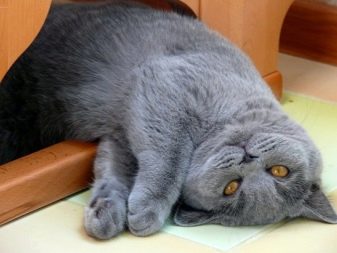
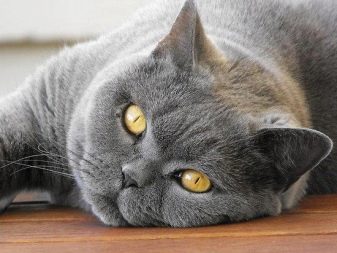
Origin
There are two legends about the origin of this breeds.
- According to the first, the ancestors of the "British" came from the mainland together with the Roman legionaries during the wars of conquest waged by the Roman Empire. It was at the very beginning of a new era. As usual, the cats defended the advancing army's food reserves from rats and mice. After the colonization of the British Isles, the Romans began to build fortresses there, in which grain and other products were also stored. Some time later, the legions left Britain, but the animals remained.
- Second version, more modern. It brought cats to England from French ships. Sailors took them on a voyage to save food supplies from rodents. Of course, while staying in the port, cats could get on the shore and stay there.
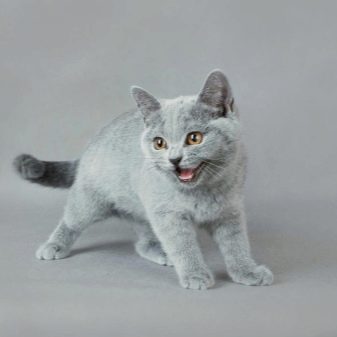
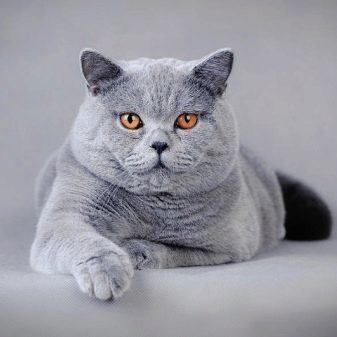
For the first time, the gray British cat gains fame in 1898. But the breed received official recognition only after 84 years. For a long time, breeders have worked to improve it. At the beginning of the 20th century, for this purpose, English cats were crossed with Persian cats, which were very popular in society.
During the two world wars, the population was significantly reduced, at some time it was even on the verge of complete extermination. Since the mid-50s, attempts have been made to restore the breed. For this, Russian blue and Cartesian cats were brought to England.It was only in the 70s that the threat of extinction was lifted.
The breed standard was approved in 1982.
Description of the breed
According to the standard, British gray cats must meet the following parameters.
- Dark gray or light gray coat.
- Strong body with powerful muscular legs and a large spherical head, almost without a neck.
- On the shoulders there is a pronounced fold of skin, like a collar.
- The muzzle is round, the nose is straight, maybe slightly flattened. A straight-eared cat has small, low-set ears, wide-open eyes, and their bright color usually matches the shade of the animal's fur.
- The tail is short, slightly wider at the base, thick along the entire length, with a rounded tip.
- The coat is short and thick, with a dense undercoat, similar to plush in texture.
- The weight of cats can be from 2.5 to 5 kg, cats are slightly larger - on average from 4.5 to 8 kilograms.
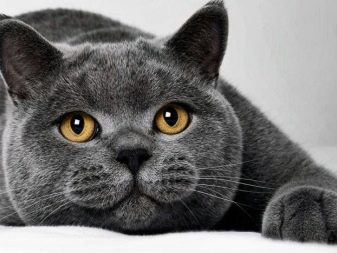
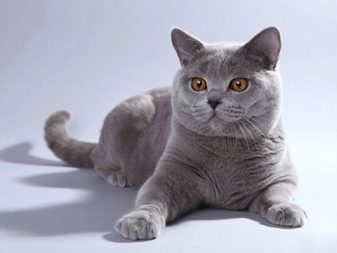
Character
The "British" are true gentlemen with English restraint and dignity. This breed has a calm, balanced and friendly character, as well as high mental abilities. They lend themselves well to training, cats understand what the owners want from them, and obey the requirements. They adore their owners, become attached to them. They are quite calm about children, they can allow them to play with themselves, they do not bite or scratch.
However, they cannot stand excessive prolonged attention, they try to quietly leave and hide somewhere in a secluded corner.

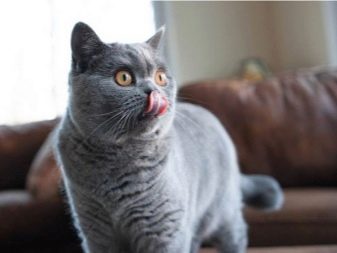
They are reluctant to take hands, they do not allow themselves to be stroked. They mistrust strangers, try to move away from them. Cats love cleanliness very much and try to maintain it, "do their own thing" only in a specially designated place, do not spoil the wallpaper and furniture. If they remain alone for a while, they do not arrange a pogrom in the apartment. Of course, a small kitten, as befits all babies, constantly plays and runs, but an adult cat (especially a cat) with age begins to be lazy, move less, prefer to lie or sit more, sleep a lot.
You need to try to stir them up, make them run (you can even run a little around the house), since this breed has a predisposition to being overweight.
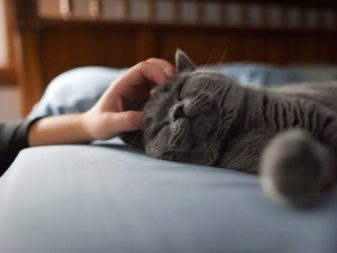
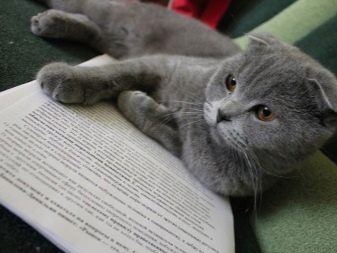
A characteristic feature is that in adult cats, puffy cheeks (flews) stand out. And also the expression on their faces is such that they look smiling ("Cheshire cat").
There is a version that the prototype of this character from the fairy tale "Alice in Wonderland" was precisely the "Briton".
Maintenance and care
British cats do not require constant attention and communication from the owner, they can be completely alone for a long time. Therefore, they are quite suitable for busy people. However, your pet's nutrition, health and well-being will need to be taken care of. Therefore, before taking a thoroughbred animal into the house, you should think carefully and decide who and when will take care of it.
Some costs will also be required - for good food, hygiene products, preventive examinations at the veterinarian, vaccinations.

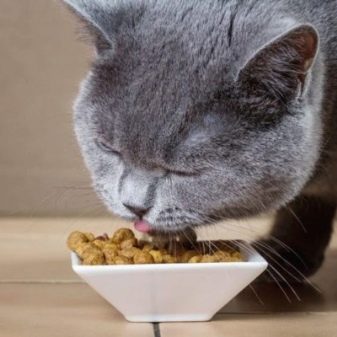
What you need to purchase for a cat:
- bowls for food and water;
- deep and wide tray with filler, as well as a rubber mat under it;
- scratching post;
- a special comb for wool;
- carrier, it can also serve as a house where the cat will hide.
Cats of the British breed need to be combed regularly - 1-2 times a week, and preferably daily during the molting period. If this is not done, the whole house will be covered in wool. In addition, when licking a fur coat, animals swallow hairs, and they can gradually clog the stomach, which leads to illness. The feeding regimen is set two times a day - in the morning and in the evening.
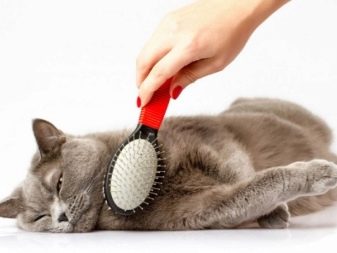
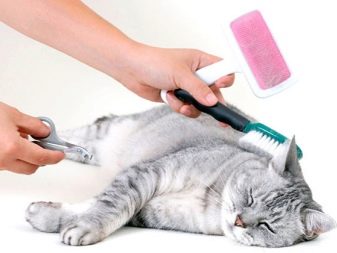
To maintain the health and vitality of the pet, they provide a variety of foods.
- Meat and offal should make up about 80% of the diet. They are given in the form of ground minced meat.
- Sea fish - only boiled and boneless. Give no more than 1-2 times a week.
- Cottage cheese, dairy products - put in a separate bowl.
- Eggs - quail is better. Give raw or omelet once a week.
- Vegetables - raw, stewed, boiled. You need to grate, mix with meat, fish.
- You can add a little cheese, vegetable oil to the diet.
To strengthen the teeth, it is sometimes useful to give meat cut into pieces.
Adult cats are inactive, lazy, sleep a lot and are prone to obesity. Therefore, in no case should you overfeed them. The optimal daily rate has been developed, it is 5% of the body weight. This volume is divided by 2 times and strictly adhere to such a nutritional system. You can give cats and dry food of industrial production. It contains all the nutrients necessary for an animal. Serving size, age category is usually indicated on the package.
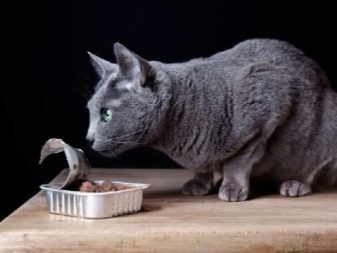
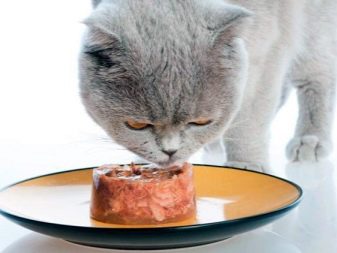
Disease prevention
Most often, illnesses in cats arise from inadequate care or malnutrition, and timely vaccination is also very important. Vaccinations for kittens and adults are done as directed by a veterinarian. In no case should they be neglected.
It is important to closely monitor your pet, pay attention in time to any negative changes in his behavior. If something is wrong, show it to a specialist immediately. Even if the alarm turns out to be false. Better to play it safe than to start the disease and then heal for a long time.
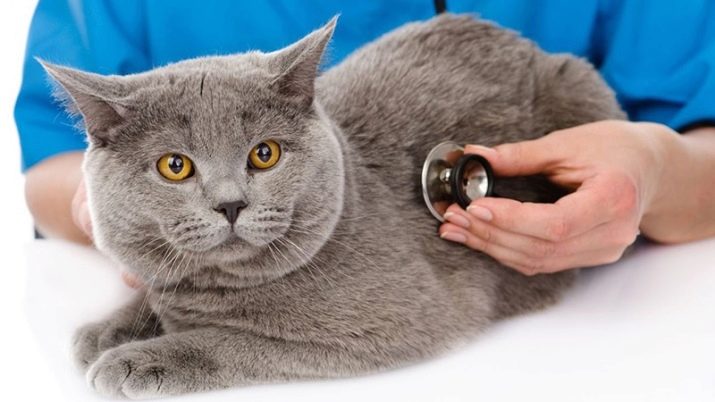
With careful and thoughtful care, British cats can live at home for up to 16 years. They have strong immunity, at the moment they are considered the healthiest and strongest breed of cats of all registered... In addition, they are very beautiful and intelligent animals.
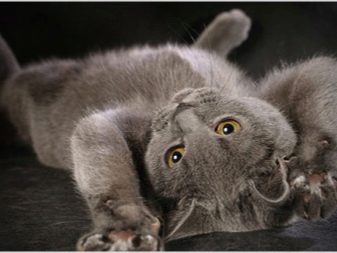
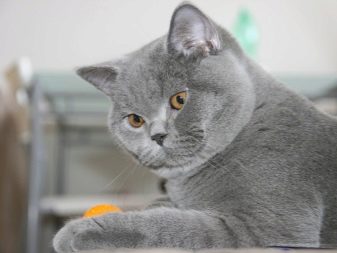
See the video about British gray cats below.
































